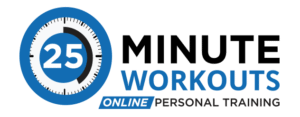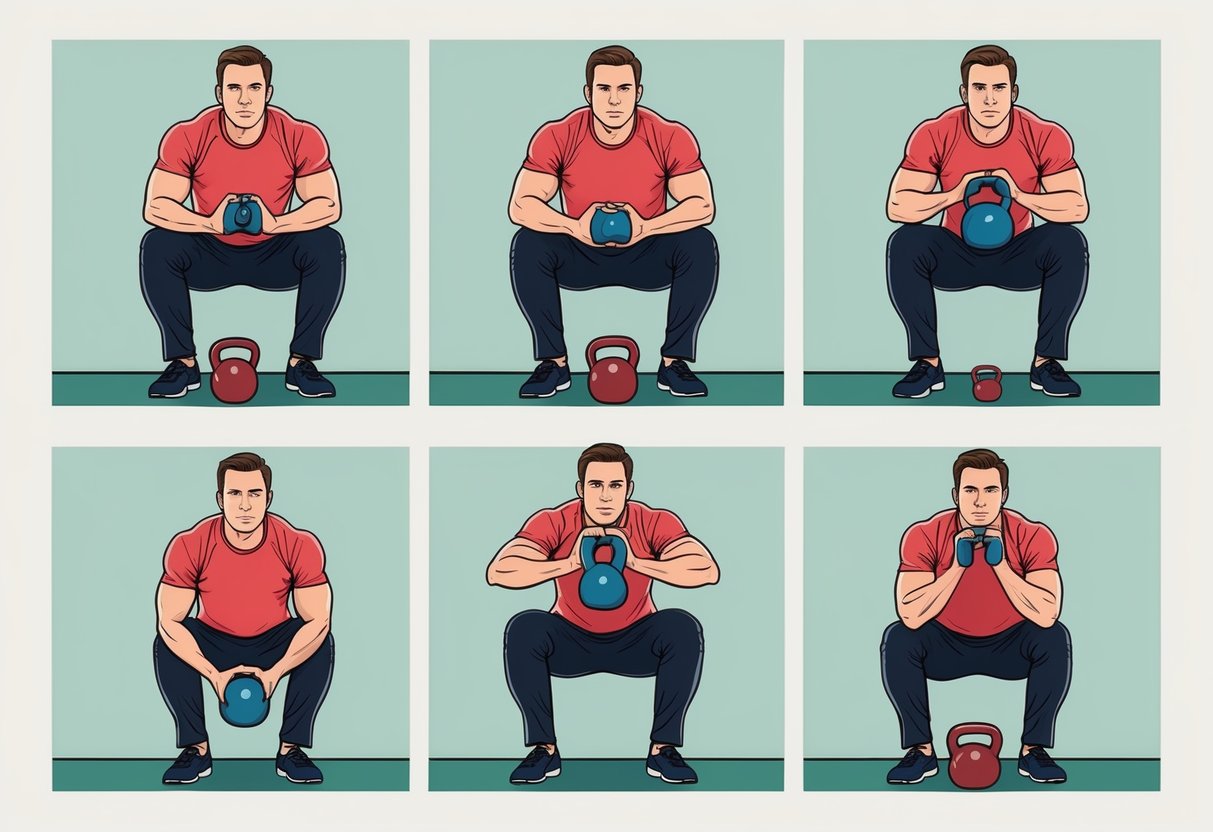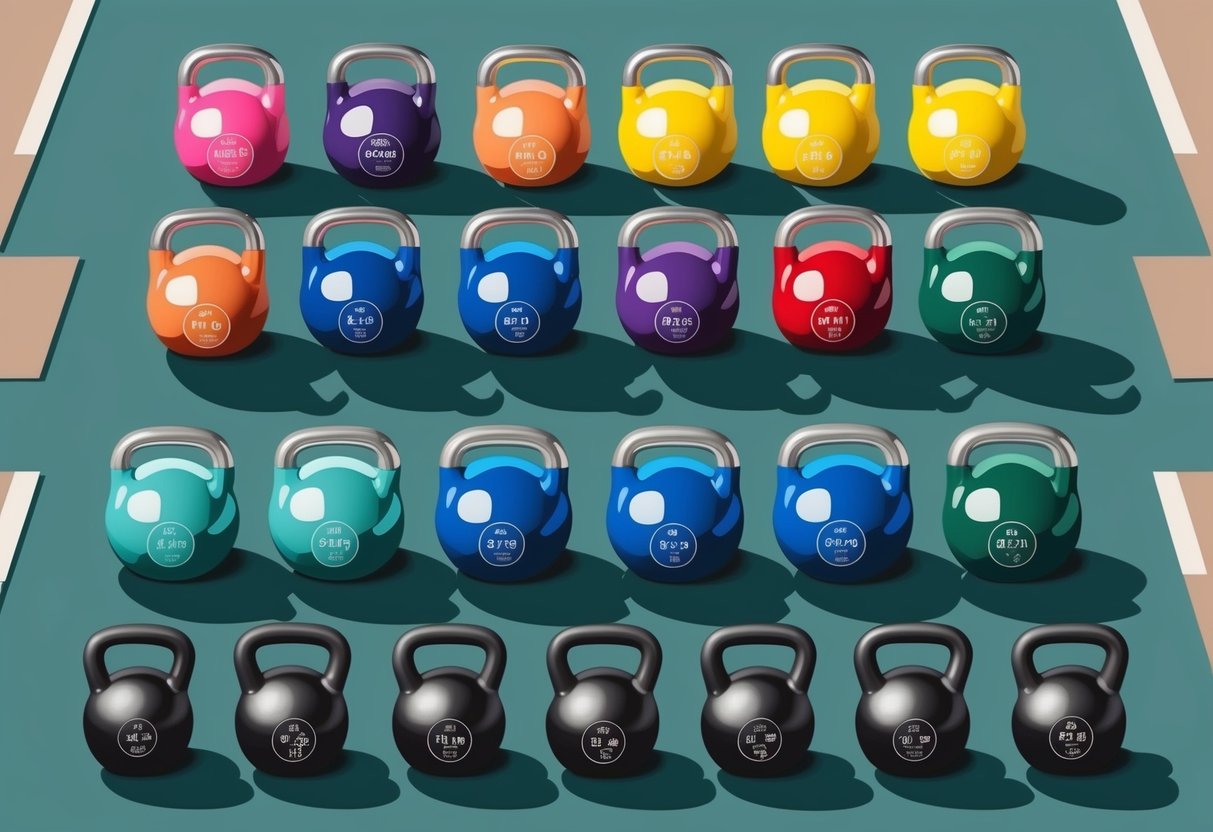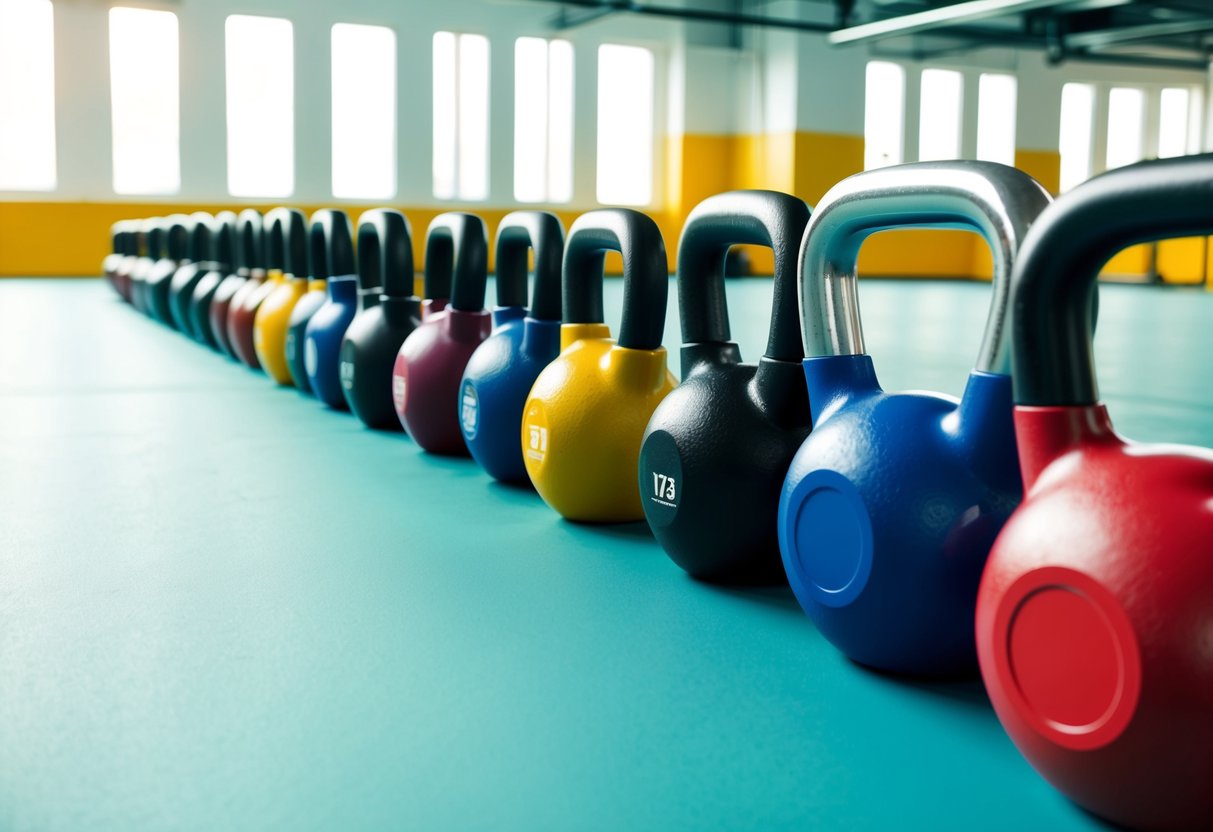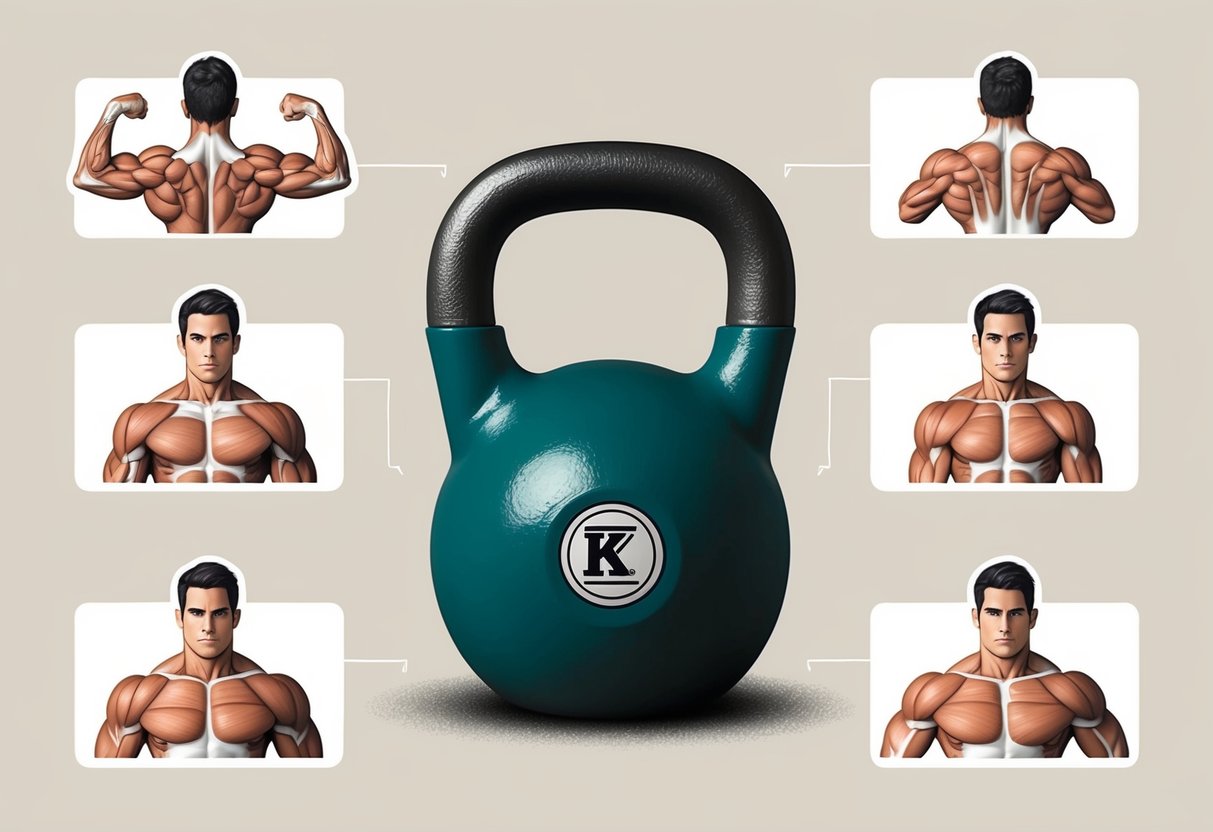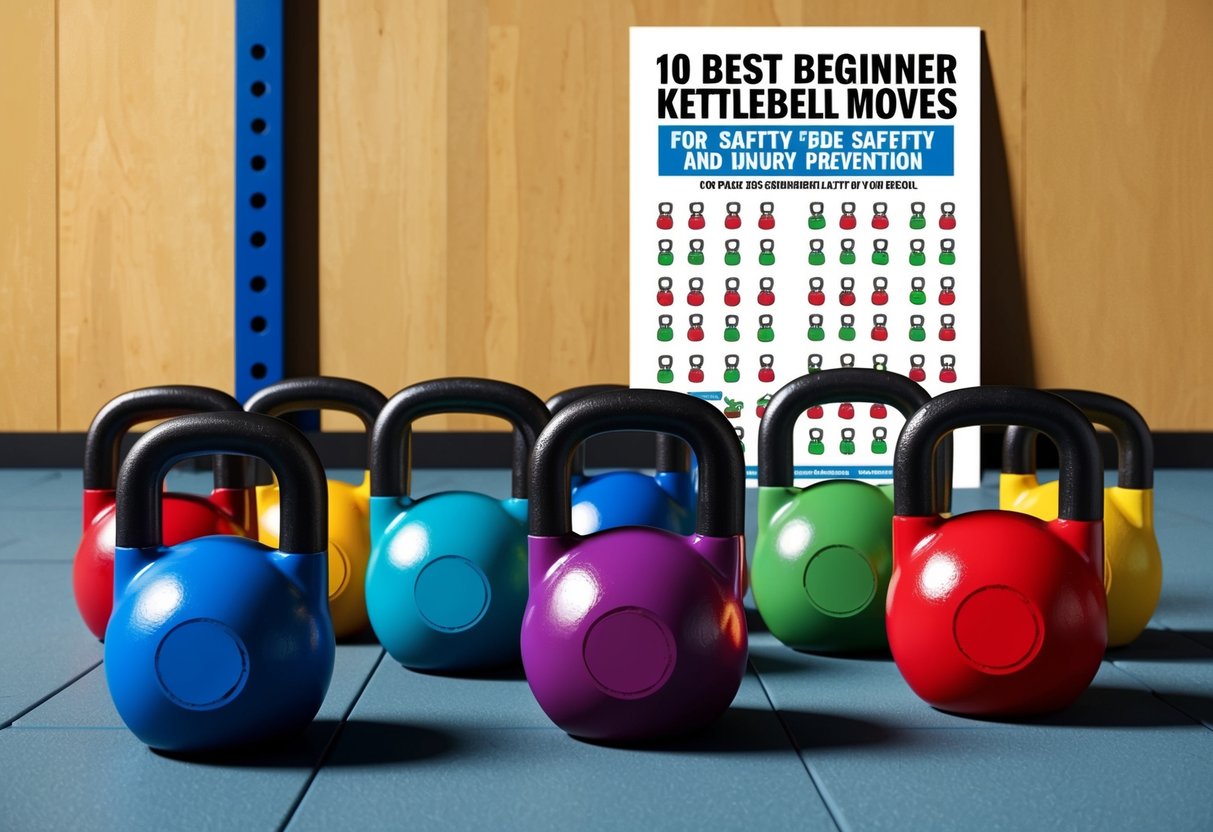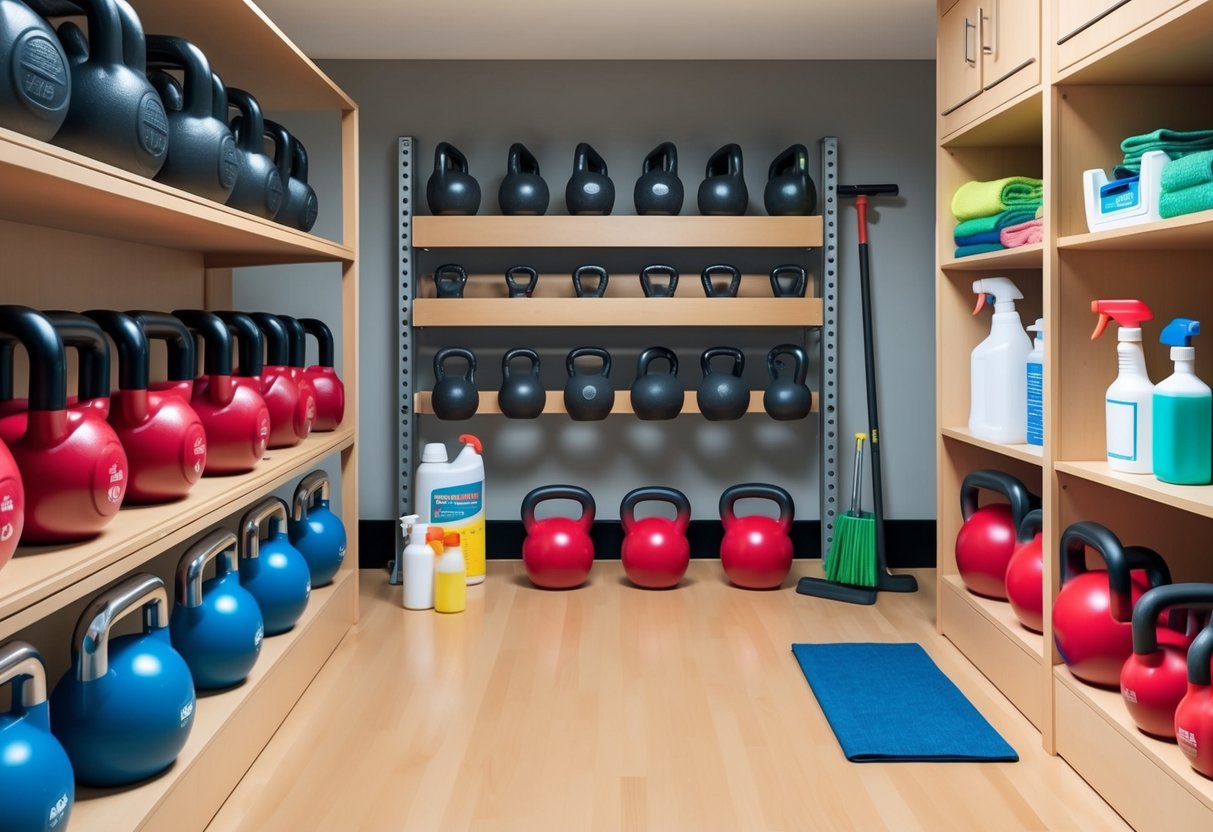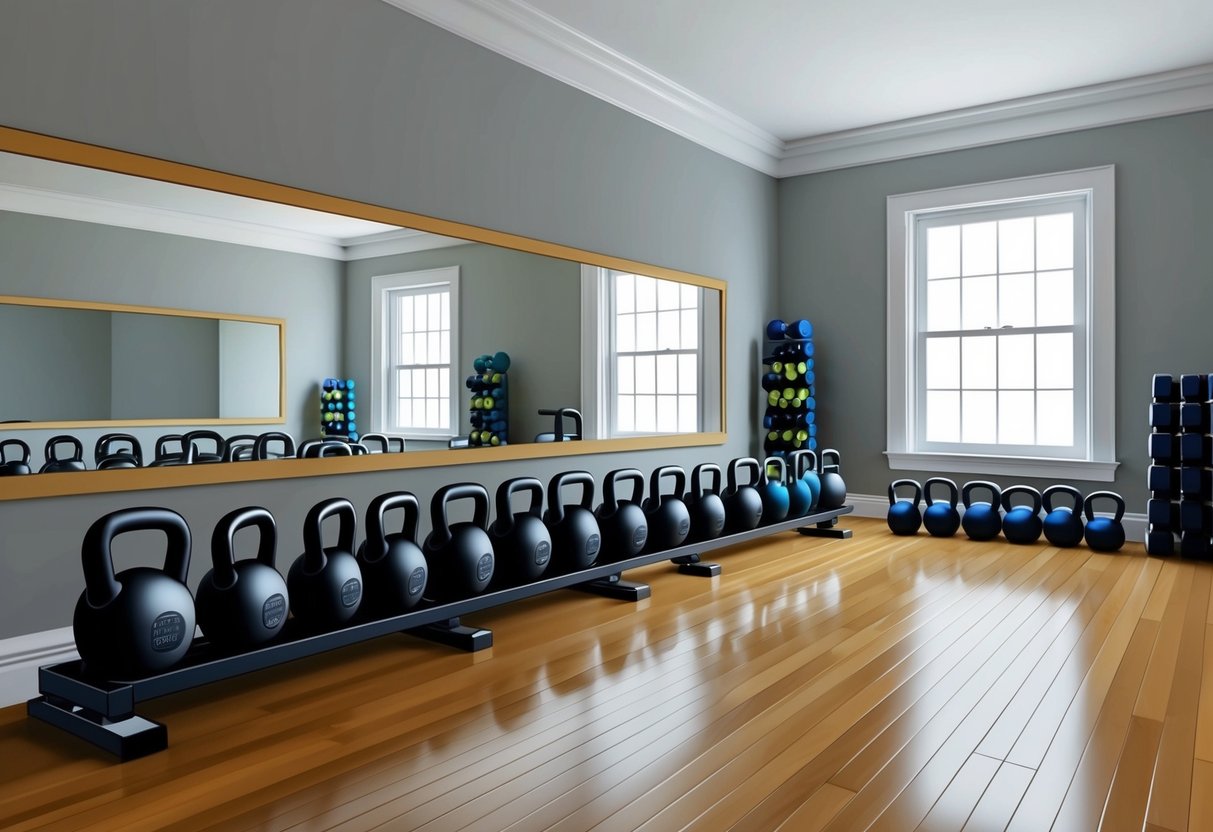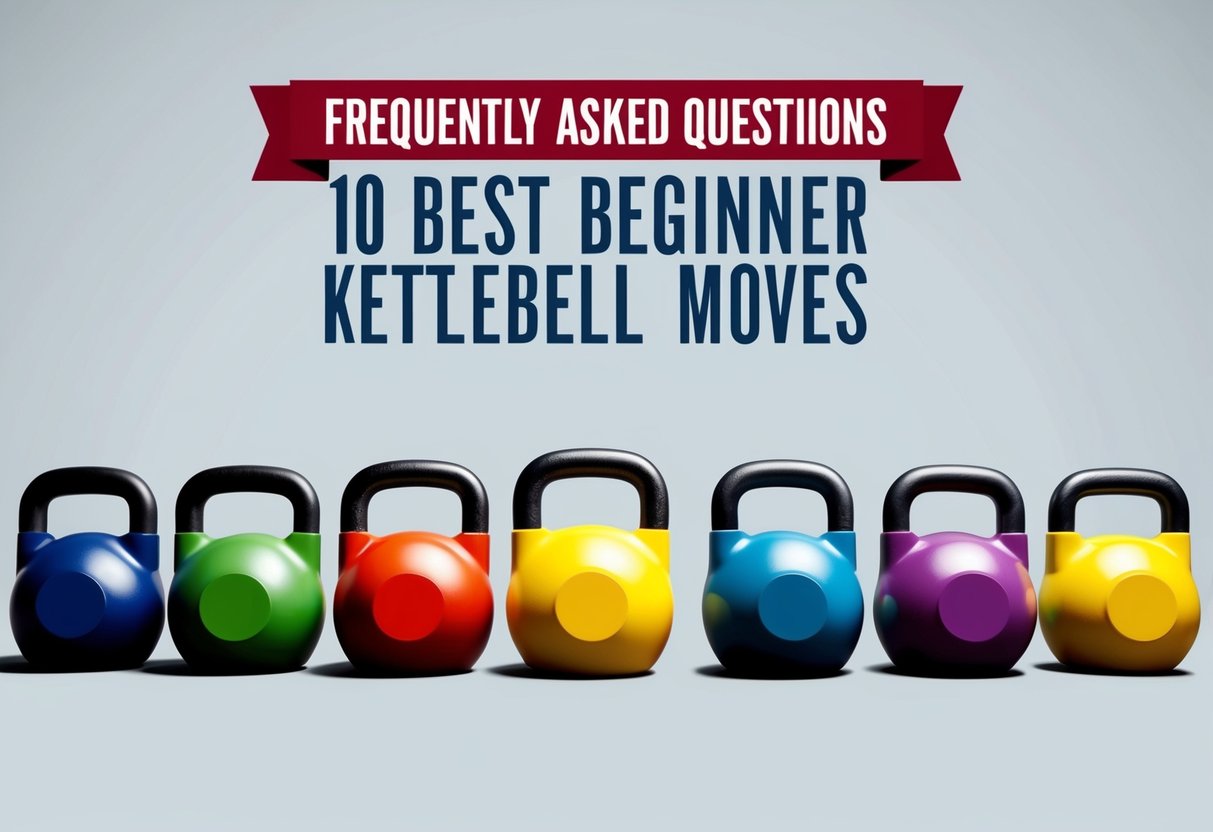Kettlebells offer a versatile and effective way to enhance your fitness routine. These cannonball-shaped weights with handles provide a unique training experience that combines strength, cardio, and flexibility exercises.
Kettlebell workouts can improve your overall strength, power, and endurance while targeting multiple muscle groups simultaneously.
Starting with kettlebell training can be intimidating, but mastering the basics is crucial for safety and effectiveness.
A 10- to 15-pound kettlebell is often recommended for beginners, allowing you to focus on proper form and technique. As you progress, you can gradually increase the weight to challenge yourself further.
By incorporating the top 10 beginner kettlebell moves into your workout regimen, you’ll lay a solid foundation for more advanced exercises.
Popular Posts
- Massage Gun vs. Foam Roller: Which Recovery Tool Reigns Supreme?
- 27 Best Calisthenics Exercises for Full-Body Strength and Fitness
- 10 HIIT Workouts for Busy Professionals: Max Fitness, Min Time
- Good Posture Working from Home: Optimize Your Workspace to Prevent Discomfort and Health Issues
- The Best Crossfit Exercises for Full-Body Conditioning
These fundamental movements will help you develop proper grip, posture, and body mechanics while building strength and improving your cardiovascular fitness.
Key Takeaways
- Kettlebell workouts combine strength, cardio, and flexibility training for efficient full-body exercise
- Start with a 10- to 15-pound kettlebell to master proper form and technique
- Mastering basic kettlebell moves builds a foundation for more advanced exercises and overall fitness improvement
Benefits of Kettlebell Training

Kettlebell training offers a wide range of advantages for both beginners and experienced fitness enthusiasts. This versatile tool can significantly improve your overall health and physical performance.
Cardiovascular Enhancement
Kettlebell workouts elevate your heart rate quickly, providing an excellent cardiovascular challenge.
Swings, snatches, and clean and jerks are particularly effective for boosting your cardio fitness.
These dynamic movements engage multiple muscle groups simultaneously, increasing oxygen demand and improving heart health.
Regular kettlebell sessions can enhance your endurance and stamina.
You’ll notice improved recovery times between exercises as your cardiovascular system becomes more efficient. This increased efficiency translates to better performance in other activities and sports.
Core Strengthening
Kettlebell exercises naturally engage your core muscles, leading to improved stability and strength.
Many movements require you to maintain a strong, stable midsection throughout the exercise.
The off-center weight of the kettlebell challenges your core in unique ways. This instability forces your abdominal muscles to work harder to maintain proper form and balance.
Exercises like the Turkish get-up and windmill specifically target core strength and stability.
These movements require precise control and coordination, resulting in a stronger, more resilient midsection.
Improved Balance and Coordination
Kettlebell training enhances your proprioception – your body’s ability to sense its position in space. This improvement leads to better balance and coordination in daily activities.
Unilateral exercises, such as single-arm swings or lunges with a kettlebell, challenge your balance and help correct muscular imbalances.
You’ll develop a more symmetrical strength profile, reducing the risk of injury.
The dynamic nature of kettlebell movements improves your hand-eye coordination and spatial awareness.
These skills transfer to various sports and activities, enhancing your overall athletic performance.
Enhanced Mobility and Stability
Kettlebell exercises often involve a wide range of motion, promoting joint flexibility and muscle elasticity.
Movements like the kettlebell halo and around-the-body pass improve shoulder mobility.
The Turkish get-up, in particular, is excellent for developing full-body stability and mobility.
This exercise takes you through multiple positions, challenging your joints and muscles throughout the movement.
Regular kettlebell training can help alleviate stiffness and improve your overall range of motion.
You’ll notice increased flexibility in your hips, shoulders, and spine, leading to better posture and reduced risk of injury.
Understanding Kettlebell Weights

Choosing the right kettlebell weight is crucial for effective and safe workouts. As you progress in your strength training journey, you’ll need to adjust the weights accordingly.
Selecting the Right Kettlebell Weight
Start with a 10- to 15-pound kettlebell if you’re new to strength training. This weight range allows you to learn proper form without overexertion.
For men, a 35-pound kettlebell is often suitable for beginners, while women may find 18 pounds more manageable.
Test the weight by performing a few basic moves. You should feel challenged but able to maintain good form throughout the exercise.
If it’s too easy, increase the weight. If you struggle to complete reps, decrease it.
Consider your fitness goals when selecting a kettlebell weight. For building strength, choose a heavier weight. For endurance and cardio, opt for a lighter one.
Progressing with Kettlebell Weights
As you gain strength and improve your technique, gradually increase your kettlebell weight.
A good rule of thumb is to move up in 4-kilogram (8.8-pound) increments. This progression allows your body to adapt safely to the new challenge.
Pay attention to your form as you increase weight. If you notice your technique suffering, drop back down to the previous weight until you’re ready to progress.
Use different weights for various exercises.
Movements that engage larger muscle groups, like swings or goblet squats, can handle heavier weights. For more isolated exercises, like arm work, stick to lighter kettlebells.
Kettlebell Grip and Posture Basics
Mastering proper grip and posture is essential for effective and safe kettlebell training. These fundamentals lay the groundwork for all kettlebell exercises and help prevent injuries.
Proper Grip Technique
Grip the kettlebell handle firmly with your fingers, not your palm. Wrap your thumb around the handle for stability.
For single-handed exercises, position your hand in the center of the handle.
When using both hands, place them close together on the handle. Avoid gripping too tightly, as this can lead to fatigue and tension in your forearms.
For exercises like the kettlebell swing, use a hook grip.
This involves wrapping your fingers around the handle without your thumb. It allows the kettlebell to move freely during dynamic movements.
Postural Alignment for Safety
Stand with your feet shoulder-width apart, knees slightly bent. Keep your core engaged and shoulders pulled back and down.
Maintain a neutral spine throughout your exercises.
When bending, hinge at your hips while keeping your back straight. This protects your lower back during movements like swings and deadlifts.
Keep your wrists neutral and aligned with your forearms. Avoid letting them bend backward or forward, which can strain the joints.
During overhead exercises, engage your lats to stabilize your shoulders. Keep your arms close to your body when lowering the kettlebell to maintain control.
Essential Kettlebell Moves
Mastering these fundamental kettlebell exercises will build a solid foundation for your strength and conditioning journey. These moves target multiple muscle groups, enhance stability, and improve overall fitness.
1. Kettlebell Swing
The kettlebell swing is a powerful hip-hinge movement that targets your posterior chain.
Start with feet shoulder-width apart, holding the kettlebell with both hands. Hinge at the hips, swinging the weight between your legs.
Explosively drive your hips forward, swinging the kettlebell to chest height. Keep your arms straight and core engaged throughout the movement.
Allow the kettlebell to fall back between your legs, controlling its descent.
Aim for 3 sets of 10-15 reps. Focus on generating power from your hips, not your arms. This exercise improves explosive strength and cardiovascular endurance.
2. Goblet Squat
The goblet squat is an excellent lower body exercise that also challenges your core.
Hold a kettlebell close to your chest with both hands, elbows tucked in. Stand with feet slightly wider than hip-width apart.
Lower your body as if sitting back into a chair, keeping your chest up and knees tracking over your toes. Descend until your thighs are parallel to the ground or as low as you can maintain proper form.
Push through your heels to return to the starting position. Perform 3 sets of 8-12 reps. This move strengthens your quads, glutes, and core while improving squat mechanics.
3. Kettlebell Clean
The kettlebell clean is a dynamic exercise that develops power and coordination.
Start with the kettlebell between your feet. Hinge at the hips and grip the handle with one hand.
Explosively extend your hips and knees, pulling the kettlebell up along your body.
As it reaches chest height, rotate your hand around the handle, “catching” the kettlebell in the rack position.
Lower the weight back down with control. Perform 3 sets of 5-8 reps per arm. This exercise enhances full-body power and grip strength.
4. Reverse Lunges with Kettlebell
The reverse lunge with a kettlebell is a great exercise for building lower body strength and stability.
Hold a kettlebell in one hand at chest height, or in the rack position. Stand with feet hip-width apart.
Step back with one foot, lowering your body until both knees are bent at 90-degree angles.
Push through the front heel to return to the starting position. Perform 3 sets of 8-10 reps per leg. This exercise targets the quads, hamstrings, and glutes while improving balance and coordination.
5. Kettlebell Snatch
The kettlebell snatch is a high-intensity move that builds explosive power and endurance.
Start with the kettlebell between your feet. Hinge at the hips and grip the handle with one hand.
Explosively extend your hips and knees, pulling the kettlebell upward. As it reaches chest height, punch your hand through the handle to lock the kettlebell overhead.
Lower the kettlebell back down with control. Perform 3 sets of 5-8 reps per arm. This move enhances full-body strength and cardiovascular fitness.
6. Kettlebell Deadlift
The kettlebell deadlift is an essential lift for building posterior chain strength.
Place the kettlebell between your feet. Stand with feet hip-width apart and hinge at the hips to grip the handle with both hands.
Keeping your back flat and core engaged, drive through your heels to lift the kettlebell to hip height.
Lower the kettlebell back down with control. Aim for 3 sets of 10-12 reps. This exercise strengthens the hamstrings, glutes, and lower back.
7. Kettlebell Press
The kettlebell press is a fundamental upper body exercise that also engages your core.
Hold a kettlebell in the rack position with one hand. Stand with feet shoulder-width apart.
Press the kettlebell overhead by extending your arm, keeping your core tight and avoiding leaning back.
Lower the kettlebell back to the rack position with control. Perform 3 sets of 6-10 reps per arm. This move targets the shoulders, triceps, and core.
8. Kettlebell Row
The kettlebell row is an effective exercise for building back strength and improving posture.
Place the kettlebell on the ground next to one foot. Hinge at the hips and place the opposite hand on a bench or your knee for support.
Grip the kettlebell and row it towards your hip, keeping your elbow close to your body.
Lower the kettlebell back down with control. Perform 3 sets of 8-12 reps per arm. This exercise targets the lats, rhomboids, and biceps.
9. Kettlebell Windmill
The kettlebell windmill is a challenging move that enhances core stability and shoulder mobility.
Hold a kettlebell overhead with one hand, feet slightly wider than hip-width apart. Turn your feet slightly away from the kettlebell.
Hinge at the hips and lower your torso towards the ground, keeping your eyes on the kettlebell and your arm straight.
Return to the starting position by engaging your core and driving through your hips. Perform 3 sets of 5-8 reps per side. This move improves flexibility, core strength, and shoulder stability.
10. Kettlebell Russian Twist
The kettlebell Russian twist is a core exercise that targets the obliques.
Sit on the ground with knees bent and feet flat. Hold a kettlebell with both hands at chest height.
Lean back slightly and lift your feet off the ground, balancing on your sit bones.
Twist your torso to one side, bringing the kettlebell towards the ground. Return to the center and twist to the opposite side.
Perform 3 sets of 12-16 reps. This exercise enhances rotational strength and core stability.
Kettlebell Workouts Structure
Structuring kettlebell workouts effectively combines exercise selection, routine planning, and appropriate scheduling. Proper structure maximizes your training benefits while minimizing injury risk.
Creating a Kettlebell Routine
Start by selecting 3-5 foundational exercises like swings, goblet squats, and rows. Arrange these moves into circuits or supersets to keep your heart rate elevated.
For example:
- Kettlebell swing: 15 reps
- Goblet squat: 10 reps
- Renegade row: 8 reps per arm
Repeat this circuit 3-4 times with minimal rest between exercises.
As you progress, increase reps or add weight. Incorporate unilateral exercises to challenge your core and improve balance.
Vary your routines weekly to target different aspects of fitness.
Focus on power one day, endurance another, and strength a third day to create a well-rounded program.
Workout Durations and Frequency
Aim for kettlebell workouts lasting 20-40 minutes, 2-3 times per week.
This duration allows for sufficient volume without overtraining. Beginners should start with shorter sessions and gradually increase time as fitness improves.
Consider your schedule and recovery needs when planning workout frequency.
Two full-body sessions per week can be effective for beginners.
More advanced users might opt for 3-4 workouts, alternating between upper body, lower body, and full-body sessions.
Monitor your heart rate during workouts to gauge intensity.
Kettlebell training can provide an excellent cardiovascular workout while strengthening your posterior chain and core.
Targeting Specific Muscle Groups
Kettlebell exercises offer versatile options for targeting different muscle groups. By selecting the right moves, you can focus on strengthening specific areas of your body effectively.
Exercises for Glutes and Posterior Chain
Kettlebell swings are excellent for activating your glutes and posterior chain.
To do them, start with a hip hinge, swinging the weight between your legs, then snap your hips forward to propel the kettlebell up to chest height.
Deadlifts target similar muscles.
Stand with feet hip-width apart, kettlebell between them. Hinge at the hips, keeping your back straight as you lower to grasp the handle. Drive through your heels to stand up, squeezing your glutes at the top.
Single-leg deadlifts challenge balance while working the glutes and hamstrings.
To do them, hold the kettlebell in one hand, lift the opposite leg behind you as you hinge forward, lowering the weight toward the floor.
Core-focused Kettlebell Workouts
Turkish get-ups are a complex move that engages your entire core.
To do them, lie on your back, holding the kettlebell above your chest with one arm. Then, sit up, and stand while keeping the weight overhead.
Windmills target obliques and improve flexibility.
To do them, stand with feet wide, kettlebell overhead in one hand. Then, bend to the side opposite the weight, sliding your free hand down your leg.
Russian twists work the entire midsection.
To do them, sit with knees bent, feet off the floor. Hold the kettlebell with both hands, rotate side to side, tapping the weight to the ground on each side.
Farmer’s walks strengthen your core stabilizers.
Simply carry a kettlebell in each hand as you walk, maintaining an upright posture with shoulders back.
Safety and Injury Prevention
Proper form is crucial when using kettlebells. Always maintain a neutral spine and engage your core throughout each movement.
Keep your shoulders down and away from your ears to prevent strain.
Start with a lightweight kettlebell to master techniques before progressing.
This reduces the risk of injury as you build strength and confidence.
Warm up thoroughly before your kettlebell workout.
Perform dynamic stretches and light cardio to prepare your muscles and joints for the exercises ahead.
Wear appropriate footwear with good grip to maintain stability.
Avoid loose clothing that could interfere with your movements or get caught on the kettlebell.
Clear your workout space of obstacles.
Ensure you have enough room to swing the kettlebell without hitting anything or anyone.
Listen to your body and rest when needed.
If you experience pain beyond normal muscle fatigue, stop the exercise immediately.
Stay hydrated during your workout.
Keep water nearby and take regular sips to maintain your energy and focus.
Consider working with a certified kettlebell instructor initially.
They can provide personalized guidance on proper form and technique for each exercise.
Kettlebell Maintenance and Storage
Proper care and storage of your kettlebells will extend their lifespan and maintain their performance.
After each use, wipe down your kettlebells with a damp cloth to remove sweat and dirt.
For cast iron kettlebells, occasionally apply a thin layer of mineral oil to prevent rust. Avoid using water-based products, as they can promote corrosion.
Store your kettlebells in a dry area away from moisture.
A dedicated rack or shelf in your home gym is ideal.
If space is limited, consider a compact storage solution like a corner stand or wall-mounted holder.
Keep kettlebells off carpet or hardwood floors when not in use.
Place them on a rubber mat or platform to protect your surfaces from potential damage.
Regularly inspect your kettlebells for any signs of wear, such as chips or cracks.
Address any issues promptly to ensure safe usage.
When transporting kettlebells, use caution to avoid dropping them.
Consider using a padded bag or wrapping them in towels to prevent damage to other items or surfaces.
Building a Home Gym with Kettlebells
Kettlebells offer a versatile and compact option for creating an effective home gym setup. With the right equipment and storage solutions, you can transform any space into a functional workout area.
Essential Equipment
Start with a set of kettlebells in varying weights.
Choose 2-3 kettlebells to begin, such as a light (8-12 kg), medium (16-20 kg), and heavy (24-32 kg) option. This range allows for progression and diverse exercises.
Add a non-slip exercise mat for floor work and to protect your flooring. A sturdy wall mirror helps you check your form during workouts.
Consider including resistance bands for additional workout variety.
A timer or interval clock is useful for tracking rest periods and workouts.
Don’t forget proper workout attire and supportive shoes. Stay hydrated with a water bottle nearby during your sessions.
Kettlebell Storage Solutions
Proper storage keeps your home gym organized and safe.
Wall-mounted racks offer a space-saving solution, keeping kettlebells off the floor. These racks come in various sizes to accommodate different kettlebell collections.
Freestanding kettlebell trees are another option, allowing for easy rearrangement of your workout space.
For a budget-friendly approach, use a sturdy shelving unit to store your kettlebells.
Consider a storage bench that doubles as a workout surface and equipment storage.
This multi-functional piece maximizes space efficiency in smaller areas.
Always store kettlebells at a comfortable height to avoid strain when lifting. Ensure your storage solution can support the weight of your kettlebell collection.
Frequently Asked Questions
Kettlebell training can be intimidating for beginners. These common questions address key concerns about getting started with kettlebells safely and effectively.
What weight kettlebell should a beginner start with?
Beginners should start with a lighter kettlebell to master proper form.
For women, 8-12 kg (18-26 lbs) is often suitable. Men can typically begin with 12-16 kg (26-35 lbs).
Choose a weight that allows you to maintain good technique throughout your workout.
It’s better to start lighter and progress as you build strength and skill.
Which kettlebell is best for beginners?
Look for a high-quality cast iron or competition-style kettlebell with a smooth handle.
Avoid kettlebells with wide or textured handles, as they can be uncomfortable for beginners.
A single kettlebell is sufficient to start. As you progress, you may want to invest in a set of different weights.
What is the most effective kettlebell exercise?
The kettlebell swing is often considered the most effective exercise.
It engages multiple muscle groups, improves cardiovascular fitness, and enhances power and coordination.
Other highly effective exercises include the Turkish get-up, goblet squat, and clean and press.
Incorporate these moves into your routine for a well-rounded workout.
What are the top kettlebell exercises for beginners to do at home?
Start with these fundamental exercises:
- Two-handed kettlebell swing
- Goblet squat
- Single-arm row
- Kettlebell deadlift
- Farmer’s carry
Focus on mastering proper form before increasing weight or complexity. Always warm up before your workout and cool down afterward.
How can beginners effectively use kettlebells for weight loss?
Combine kettlebell exercises with a balanced diet for effective weight loss.
Perform full-body workouts 2-3 times per week, focusing on compound movements like swings, squats, and presses.
Incorporate high-intensity interval training (HIIT) with kettlebells to boost calorie burn.
Start with 20-30 minute sessions and gradually increase duration and intensity as your fitness improves.
Are there specific kettlebell workouts for beginners over 50?
Yes, kettlebell training can be adapted for beginners over 50. Focus on low-impact exercises that improve strength, flexibility, and balance.
Start with lighter weights and prioritize proper form.
Key exercises include:
- Goblet squats
- Deadlifts
- Halos
- Seated presses
- Farmer’s walks
Always consult your doctor before starting a new exercise program, especially if you have any health concerns or pre-existing conditions.
